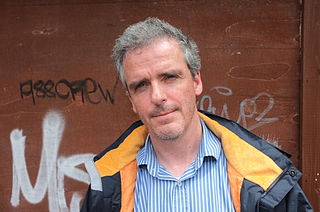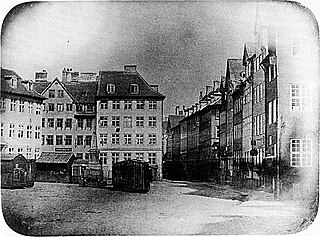Robert Adams is an American photographer who has focused on the changing landscape of the American West. His work first came to prominence in the mid-1970s through his book The New West (1974) and his participation in the exhibition New Topographics: Photographs of a Man-Altered Landscape in 1975. He has received two Guggenheim Fellowships, a MacArthur Fellowship, the Deutsche Börse Photography Prize and the Hasselblad Award.

Paul Graham is a British fine-art and documentary photographer. He has published three survey monographs, along with 17 other publications.

Anders Petersen is a Swedish photographer, based in Stockholm. He makes intimate and personal documentary-style black and white photographs. Petersen has published more than 20 books.

Alec Soth is an American photographer, based in Minneapolis. Soth makes "large-scale American projects" featuring the midwestern United States. New York Times art critic Hilarie M. Sheets wrote that he has made a "photographic career out of finding chemistry with strangers" and photographs "loners and dreamers". His work tends to focus on the "off-beat, hauntingly banal images of modern America" according to The Guardian art critic Hannah Booth. He is a member of Magnum Photos.

Donovan Wylie is an Irish photographer from Northern Ireland, based in Belfast. His work chronicles what he calls "the concept of vision as power in the architecture of contemporary conflict" – prison, army watchtowers and outposts, and listening stations – "merging documentary and art photography".

Trevor Paglen is an American artist, geographer, and author whose work tackles mass surveillance and data collection.

In Denmark, photography has developed from strong participation and interest in the very beginnings of the art in 1839 to the success of a considerable number of Danes in the world of photography today.
Simon Roberts is a British photographer. His work deals with peoples' "relationship to landscape and notions of identity and belonging."

Jacob Aue Sobol is a Danish photographer. He has worked in East Greenland, Guatemala, Tokyo, Bangkok, Copenhagen, America and Russia. In 2007 Sobol became a nominee at Magnum Photos and a full member in 2012. Four monographs and many catalogues of his work have been published and widely exhibited including at Yossi Milo Gallery in New York and at the Diemar/Noble Photography Gallery in London.
Lars Schwander is a Danish photographer and gallerist. As a photographer he is most known for his portraits of international artists. In 1996 he founded Fotografisk Center in Copenhagen, an exhibition space for art photography.

Viggo Reinholdt Rivad was a Danish photographer who started as an autodidact in 1946, and went on to win numerous competitions in the 1950s and 1960s. Around 1960, he adopted his so-called "essay approach", resulting in a series of related photographs, such as Et farvel (1962) and Laurits (1971). Rivad, who also earned a living as a taxi driver, was a quiet, dedicated photographer, concentrating on disadvantaged areas and people on the fringes of society. His humanitarian messages were a result of his indignation, and his concern for society's outcasts.

Krass Clement Kay Christensen is a Danish photographer who has specialized in documentary work. He graduated as a film director in Copenhagen but soon turned to still photography, publishing his first book Skygger af øjeblikke in 1978. He has since become an active documentary photographer, focusing on people from both Denmark and abroad. His earlier work is black and white but since 2000 he has also worked in colour.
Morten Bo, is a Danish photographer who has specialized in documentary work with a social impact. His 15 travelling exhibitions in the 1970s and 1980s proved quite controversial. In the 1980s, he turned to more abstract photography with lines, contours and contrasts of light and shade. A member of Delta-Photos from 1967 to 1972, in 1973, he was a co-founder of the Ragnarok group. In line with his interest in promoting the art, he founded Fatamorgana, Denmark's school of art photography, in 1989.
Ib Jesper Brieghel Høm was a Danish photographer and film director. After opening his own studio in Copenhagen, he travelled widely, finally working for Agence VISA in Paris. Høm was a co-founder of Copenhagen's Delta Photos, an organization designed to inspire and assist press photographers. Most of the remainder of his career was devoted to film, where he participated in the making of several Danish films as cinematographer, screenwriter and director.

Jan Grarup is a Danish photojournalist who has worked both as a staff photographer and as a freelance, specializing in war and conflict photography. He has won many prizes including the World Press Photo award for his coverage of the war in Kosovo.
The Deutsche Börse Photography Foundation Prize is a prize awarded annually by the Deutsche Börse Photography Foundation and The Photographers' Gallery to a photographer who has made the most significant contribution to the photographic medium in Europe during the past year.
Roe Ethridge is a postmodernist commercial and art photographer, known for exploring the plastic nature of photography – how pictures can be easily replicated and recombined to create new visual experiences. He often adapts images that have already been published, adding new, sculpted simulations of reality, or alternatively creates highly stylized versions of classical compositions, such as a still life bowl of moldy fruit which appeared on the cover of Vice magazine, or landscapes and portraits with surprising elements. After participating in the 2008 Whitney Biennial, his work has been collected by several leading public museums, including the Museum of Modern Art, Institute of Contemporary Art, Boston, Museum of Contemporary Art, Los Angeles, and the Tate Modern. In 2010, his work was included in the MoMA's 25th Anniversary New Photography exhibit.
Tina Enghoff is a Danish photographer, video artist, and writer who graduated from the International Center of Photography (ICP), New York.
Rafał Milach is a Polish visual artist and photographer. His work is about the transformation taking place in the former Eastern Bloc, for which he undertakes long-term projects. He is an associate member of Magnum Photos.
Mark Ruwedel is an American landscape photographer and educator.











